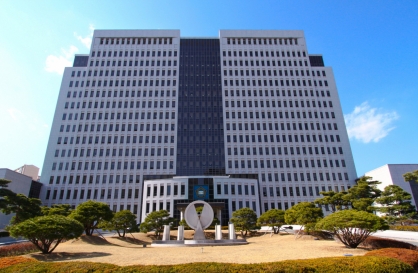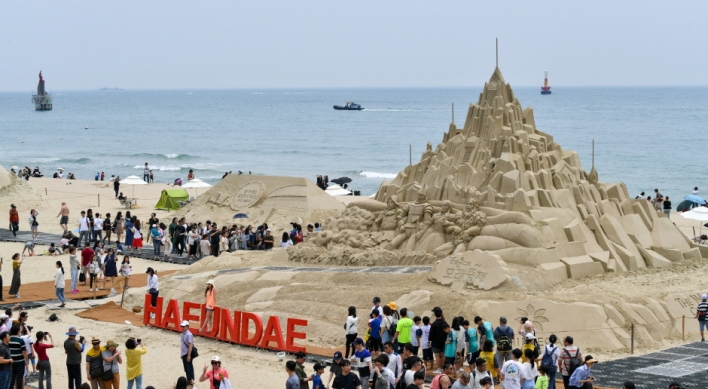Ancient China had a great civilization, with the Great Wall being one of its legacies attesting to its ancient history. But was it necessary for modern China to dot the fortifications of non-Chinese ancient civilizations and link them to extend the length of the Great Wall, as it has done now?
The wall, the largest manmade structure in the world, is a series of fortifications made of stone, brick, tamped earth and other materials. According to a 2009 Chinese estimate, the wall, built to fend off foreign invasions, ran 8,853 kilometers along the northern historical border of China.
Last week, China revised the erstwhile estimate, based on what it claimed to be archeological surveys, and extended the length of the wall to 21,196 kilometers. There should be no reason to dispute the revision should it be based on historical fact.
The revision, however, is anything but academically based. Instead, it is an extension of the “Northeast Project,” a four-year project to rewrite history that the Chinese government launched in 2002. The project aims, among other things, to describe Goguryeo, one of the three ancient Korean kingdoms, as part of ancient Chinese territory. The revision extended the wall well into the territory of Goguryeo, infuriating both the general public in Korea and Korean historians. Goguryeo controlled a large portion of Manchuria as well as the northern part of the Korean Peninsula.
China’s attempts are futile. The wall is not a rubber band that can be stretched to the length desired by the Chinese government.
But this is not to say it was beyond comprehension, given that one of the great concerns for modern China as a multiethnic state is secessionist movements among the Buddhists in Tibet and Muslim Uighurs in Xinjiang.
Though no such movement is found among ethnic Koreans, history was exploited to stress they were part of multiethnic China, as was witnessed in the remarks of a provincial researcher affiliated with the Chinese Academy of Social Sciences.
According to a news report, the researcher claimed that ethnic minorities in China built certain parts of the wall in different periods of time and that the remains of the wall, including those from Goguryeo, belonged to the ancient Chinese civilization. If so, it truly is an enigma why China did not extend the wall into North Korea this time.
The wall, the largest manmade structure in the world, is a series of fortifications made of stone, brick, tamped earth and other materials. According to a 2009 Chinese estimate, the wall, built to fend off foreign invasions, ran 8,853 kilometers along the northern historical border of China.
Last week, China revised the erstwhile estimate, based on what it claimed to be archeological surveys, and extended the length of the wall to 21,196 kilometers. There should be no reason to dispute the revision should it be based on historical fact.
The revision, however, is anything but academically based. Instead, it is an extension of the “Northeast Project,” a four-year project to rewrite history that the Chinese government launched in 2002. The project aims, among other things, to describe Goguryeo, one of the three ancient Korean kingdoms, as part of ancient Chinese territory. The revision extended the wall well into the territory of Goguryeo, infuriating both the general public in Korea and Korean historians. Goguryeo controlled a large portion of Manchuria as well as the northern part of the Korean Peninsula.
China’s attempts are futile. The wall is not a rubber band that can be stretched to the length desired by the Chinese government.
But this is not to say it was beyond comprehension, given that one of the great concerns for modern China as a multiethnic state is secessionist movements among the Buddhists in Tibet and Muslim Uighurs in Xinjiang.
Though no such movement is found among ethnic Koreans, history was exploited to stress they were part of multiethnic China, as was witnessed in the remarks of a provincial researcher affiliated with the Chinese Academy of Social Sciences.
According to a news report, the researcher claimed that ethnic minorities in China built certain parts of the wall in different periods of time and that the remains of the wall, including those from Goguryeo, belonged to the ancient Chinese civilization. If so, it truly is an enigma why China did not extend the wall into North Korea this time.
-
Articles by Korea Herald








![[News Analysis] Yoon's first 2 years marked by intense confrontations, lack of leadership](http://res.heraldm.com/phpwas/restmb_idxmake.php?idx=644&simg=/content/image/2024/05/09/20240509050612_0.jpg&u=20240509233252)
![[Graphic News] Beer the most favored alcoholic drink by Koreans](http://res.heraldm.com/phpwas/restmb_idxmake.php?idx=644&simg=/content/image/2024/05/09/20240509050765_0.gif&u=)









